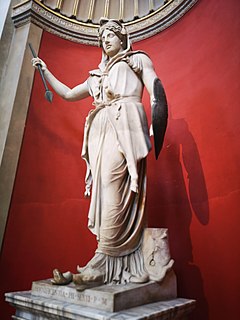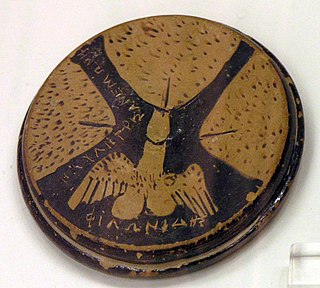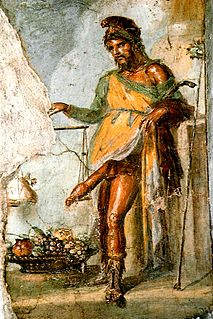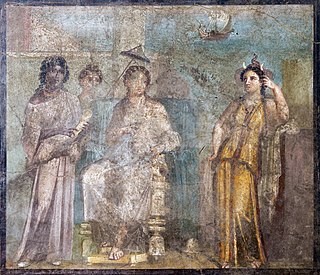Related Research Articles

Fertility awareness (FA) refers to a set of practices used to determine the fertile and infertile phases of a woman's menstrual cycle. Fertility awareness methods may be used to avoid pregnancy, to achieve pregnancy, or as a way to monitor gynecological health.
Calendar-based methods are various methods of estimating a woman's likelihood of fertility, based on a record of the length of previous menstrual cycles. Various methods are known as the Knaus–Ogino method and the rhythm method. The standard days method is also considered a calendar-based method, because when using it, a woman tracks the days of her menstrual cycle without observing her physical fertility signs. The standard days method is based on a fixed formula taking into consideration the timing of ovulation, the functional life of the sperm and the ovum, and the resulting likelihood of pregnancy on particular days of the menstrual cycle. These methods may be used to achieve pregnancy by timing unprotected intercourse for days identified as fertile, or to avoid pregnancy by avoiding unprotected intercourse during fertile days.

Proserpina or Proserpine is an ancient Roman goddess whose iconography, functions and myths are virtually identical to those of Greek Persephone. Proserpina replaced or was combined with the ancient Roman fertility goddess Libera, whose principal cult was housed in the Aventine temple of the grain-goddess Ceres, along with the wine god Liber.

In ancient Roman religion, Ceres was a goddess of agriculture, grain crops, fertility and motherly relationships. She was originally the central deity in Rome's so-called plebeian or Aventine Triad, then was paired with her daughter Proserpina in what Romans described as "the Greek rites of Ceres". Her seven-day April festival of Cerealia included the popular Ludi Ceriales. She was also honoured in the May lustratio of the fields at the Ambarvalia festival, at harvest-time, and during Roman marriages and funeral rites. She is usually depicted as a mature woman.

The total fertility rate (TFR) of a population is the average number of children that would be born to a woman over her lifetime if:
- she were to experience the exact current age-specific fertility rates (ASFRs) through her lifetime
- she were to live from birth until the end of her reproductive life.

Juno was an ancient Roman goddess, the protector and special counsellor of the state. She was equated to Hera, queen of the gods in Greek mythology. A daughter of Saturn, she was the wife of Jupiter and the mother of Mars, Vulcan, Bellona and Juventas. Like Hera, her sacred animal was the peacock. Her Etruscan counterpart was Uni, and she was said to also watch over the women of Rome. As the patron goddess of Rome and the Roman Empire, Juno was called Regina ("Queen") and was a member of the Capitoline Triad, centered on the Capitoline Hill in Rome, and also including Jupiter, and Minerva, goddess of wisdom.

In ancient Roman religion and mythology, Tellus Mater or Terra Mater is the personification of the Earth. Although Tellus and Terra are hardly distinguishable during the Imperial era, Tellus was the name of the original earth goddess in the religious practices of the Republic or earlier. The scholar Varro (1st century BC) lists Tellus as one of the di selecti, the twenty principal gods of Rome, and one of the twelve agricultural deities. She is regularly associated with Ceres in rituals pertaining to the earth and agricultural fertility.

The Obando Fertility Rites are a dance ritual, initially an Anitist ritual, and later also became a Catholic festival celebrated every May in Obando, Bulacan, Philippines. Locals and pilgrims, sometimes dressed in traditional costume, dance and sing in the town's streets to honour and beseech Obando's three patron saints: San Pascual, Santa Clara and Nuestra Señora de Salambáo.

Bruttia Crispina was Roman Empress from 178 to 191 as the consort of Roman Emperor Commodus. Her marriage to Commodus did not produce an heir, and her husband was instead succeeded by Pertinax.

A phallus is a penis, an object that resembles a penis, or a mimetic image of an erect penis. In art history a figure with an erect penis is described as ithyphallic.

In Greek mythology, Priapus is a minor rustic fertility god, protector of livestock, fruit plants, gardens and male genitalia. Priapus is marked by his oversized, permanent erection, which gave rise to the medical term priapism. He became a popular figure in Roman erotic art and Latin literature, and is the subject of the often humorously obscene collection of verse called the Priapeia.

Demographically, as in other more recent and thus better documented pre-modern societies, papyrus evidence from Roman Egypt suggests the demographic profile of the Roman Empire had high infant mortality, a low marriage age, and high fertility within marriage. Perhaps half of the Roman subjects died by the age of 5. Of those still alive at age 10, half would die by the age of 50.
A flower girl is a young female who scatters flower petals down the aisle during a wedding procession.

A vegetation deity is a nature deity whose disappearance and reappearance, or life, death and rebirth, embodies the growth cycle of plants. In nature worship, the deity can be a god or goddess with the ability to regenerate itself. A vegetation deity is often a fertility deity. The deity typically undergoes dismemberment, scattering, and reintegration, as narrated in a myth or reenacted by a religious ritual. The cyclical pattern is given theological significance on themes such as immortality, resurrection, and reincarnation. Vegetation myths have structural resemblances to certain creation myths in which parts of a primordial being's body generate aspects of the cosmos, such as the Norse myth of Ymir.

Goddess Africa, also known as Dea Africa, was the personification of Africa by the Romans in the early centuries of the common era. She was one of the fertility and abundance deities to some. Her iconography typically included an elephant-mask head dress, a cornucopia, a military standard, and a lion.

Fertility fraud is the failure on the part of a fertility doctor to obtain consent from a patient before inseminating her with his own sperm. This normally occurs in the context of people using assisted reproductive technology (ART) to address fertility issues.